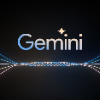While visual language model architectures and training infrastructures advance rapidly, data curation remains under-explored where quantity and quality become a bottleneck. Existing work either crawls extra Internet data with a loose guarantee of quality or distills from black-box proprietary models, e.g., GPT-4V / Gemini that are API frequency and performance bounded. This work enables a VLM to improve itself via data enhancement, exploiting its generative nature. We introduce a simple yet effective VLM augmentation scheme that includes a self-augment step and a specialist-augment step to iteratively improve data quality and hence, model performance. In the self-augment step, the instruction-finetuned VLM recaptions its pretraining caption datasets and then retrains from scratch leveraging refined data. Without any expensive human-in-the-loop annotation, we observe improvements in data quality and downstream accuracy boosts with three self-augmentation rounds -- a viable free lunch to the current VLM training recipe. When self-augmentation saturates, we augment the caption diversity by leveraging specialty skills picked up from instruction finetuning. We finetune VLM specialists from the self-augmented VLM with domain-specific experts, including spatial, grounding, and OCR, to fuse task-aware synthetic data into the pretraining stage. Data quality improvements and hallucination reductions are cross-checked by VLM (GPT-4V, Gemini) and human judges. Combining self-augmentation and specialist-augmented training, VILA$^2$ consistently improves the accuracy on a wide range of benchmarks over the prior art, producing a reusable pretraining dataset that is 300x more cost-efficient than human labeling.
翻译:暂无翻译




